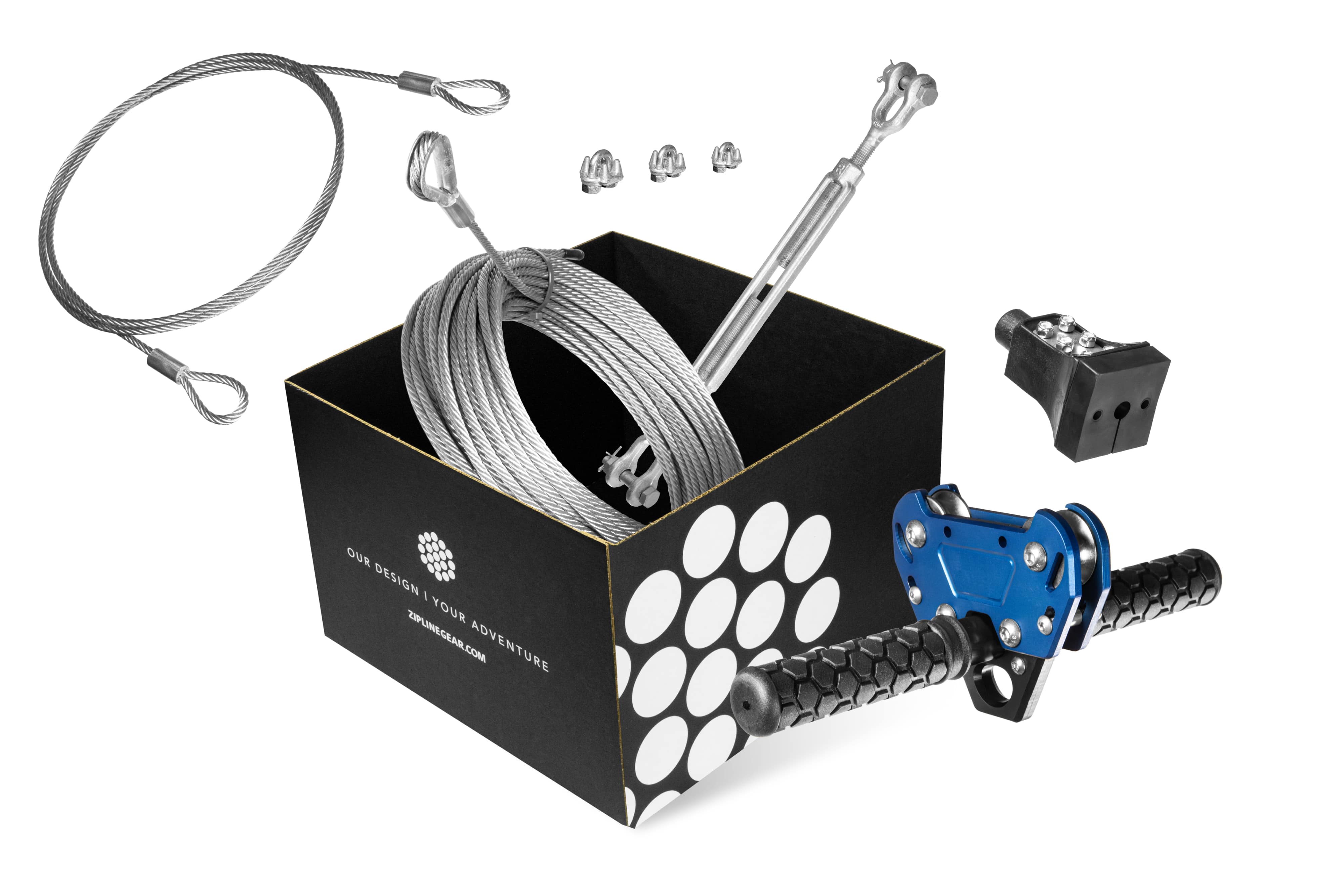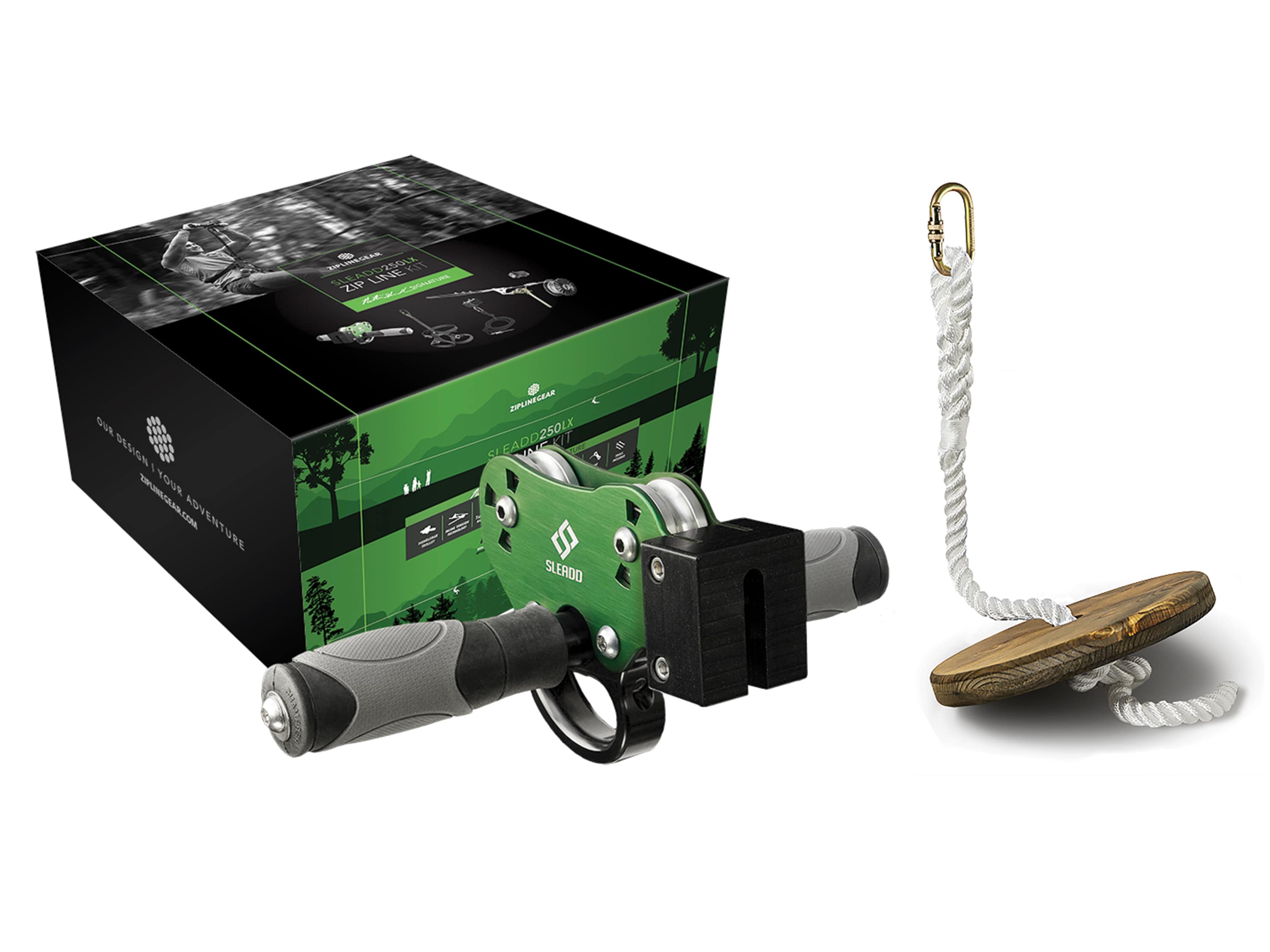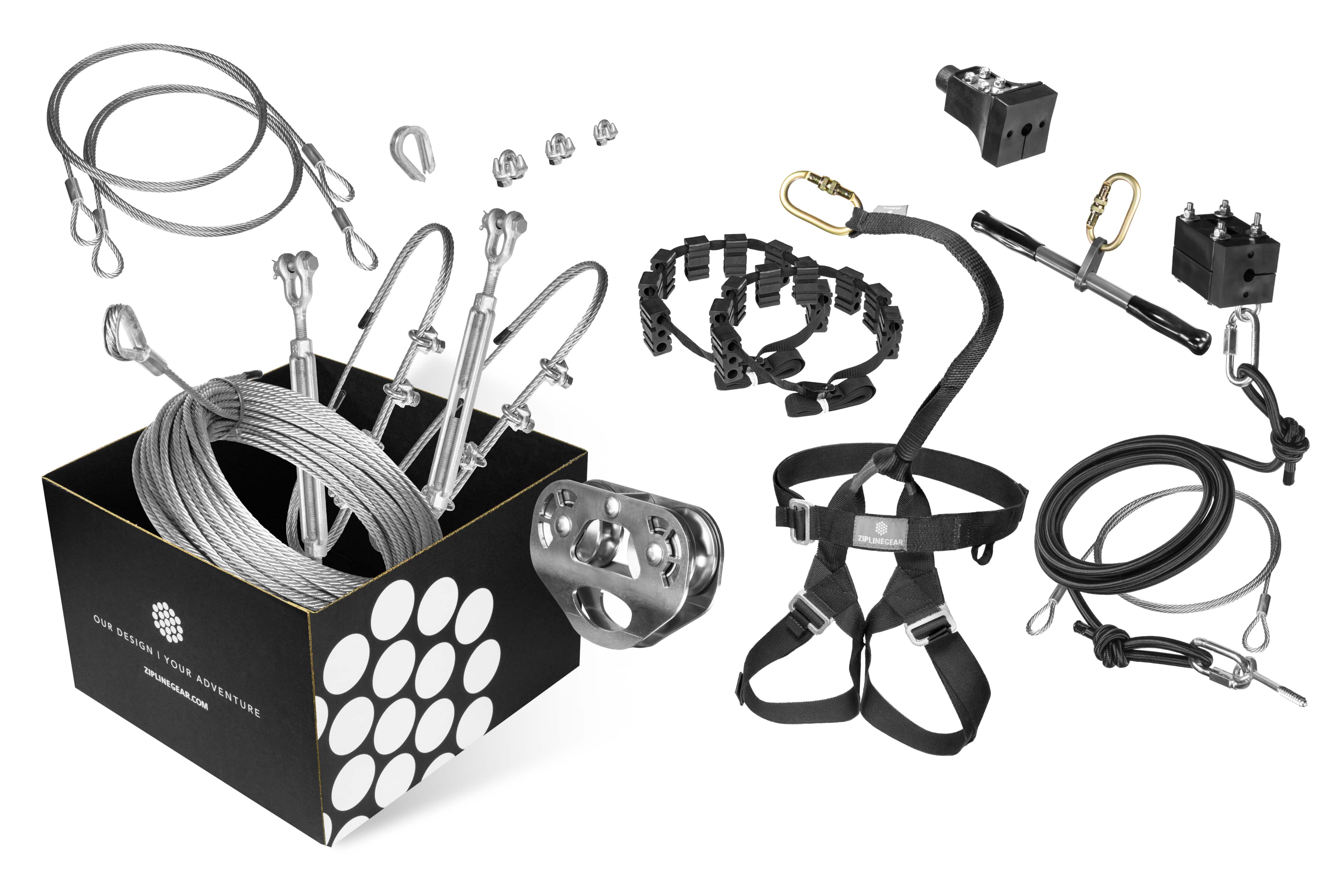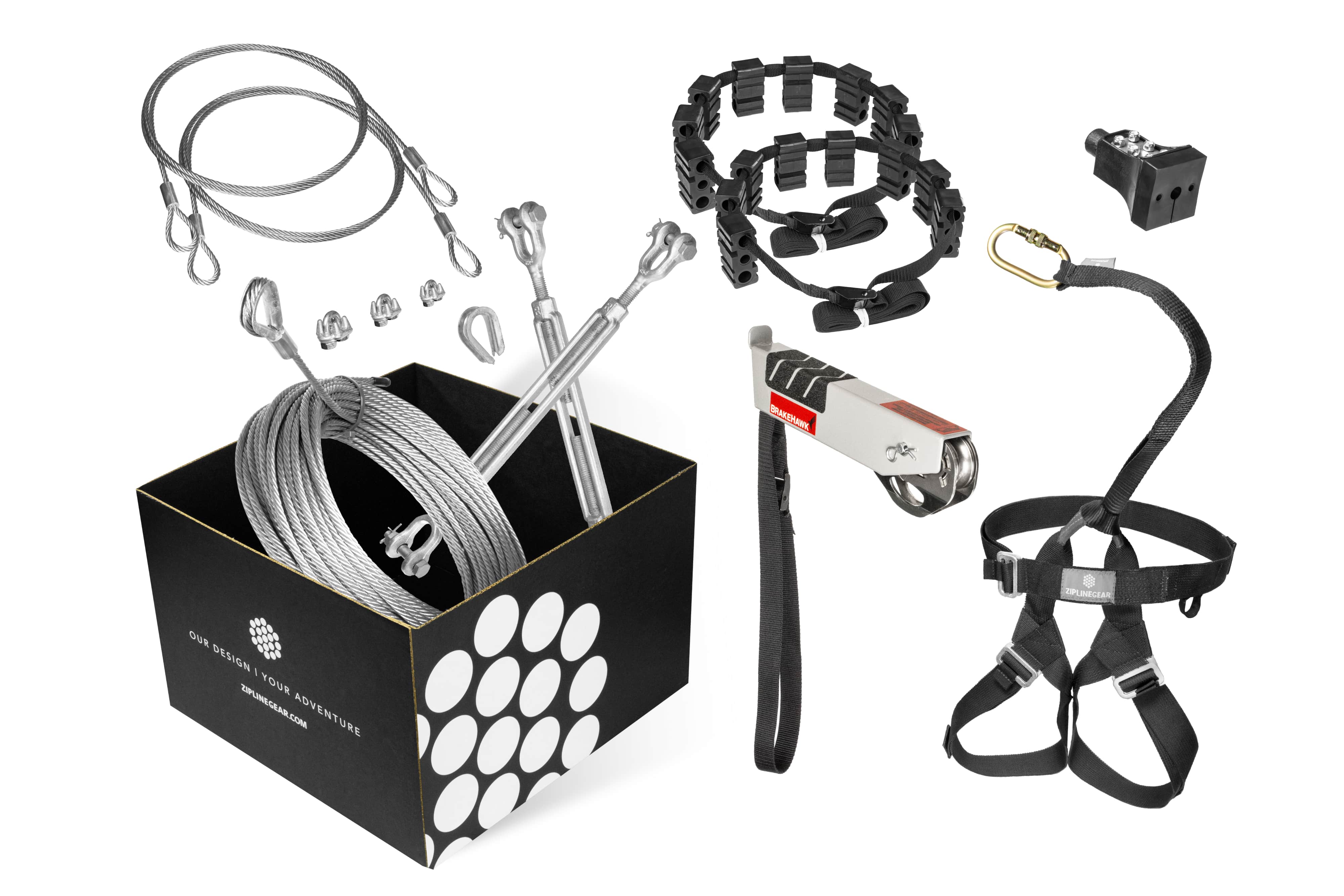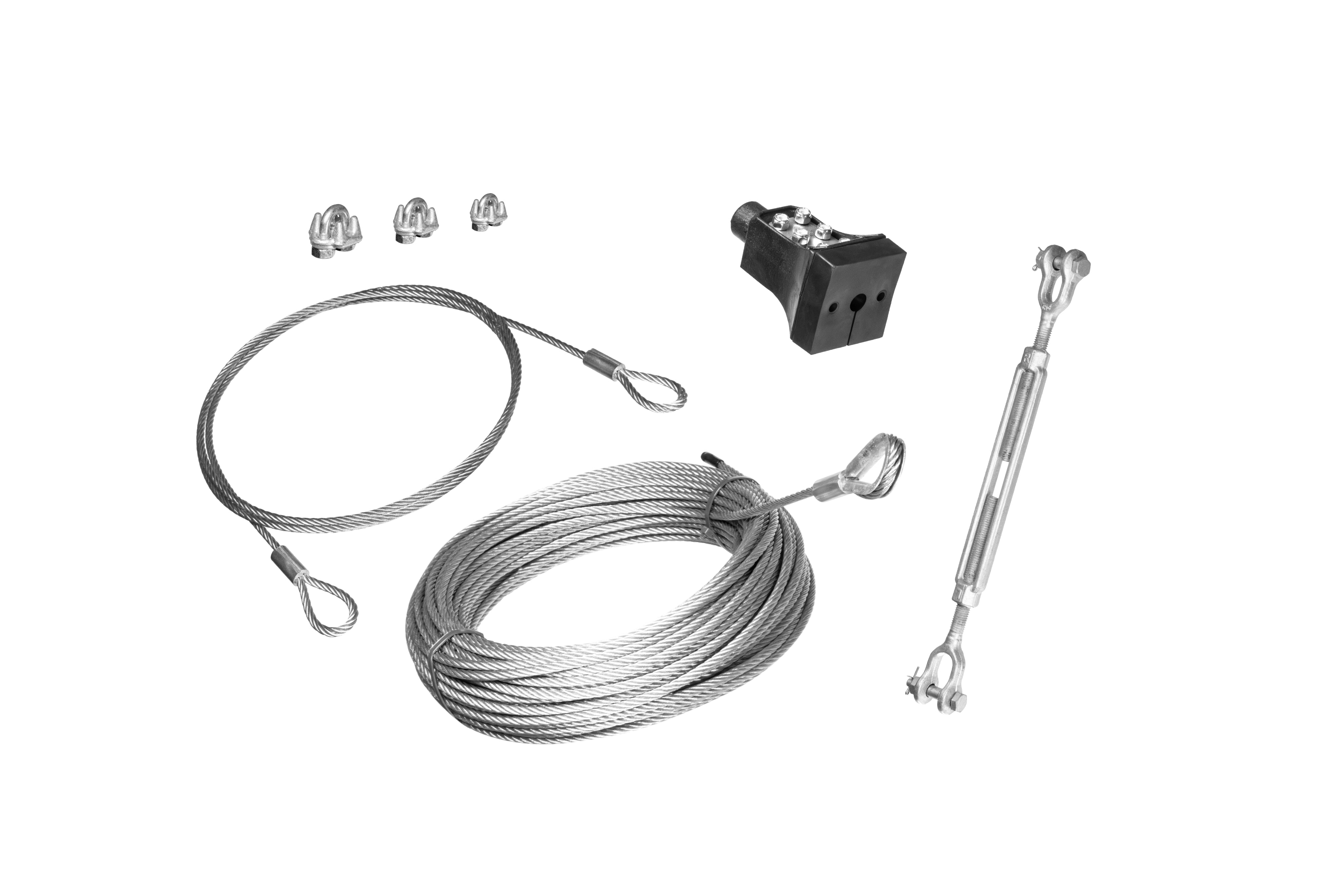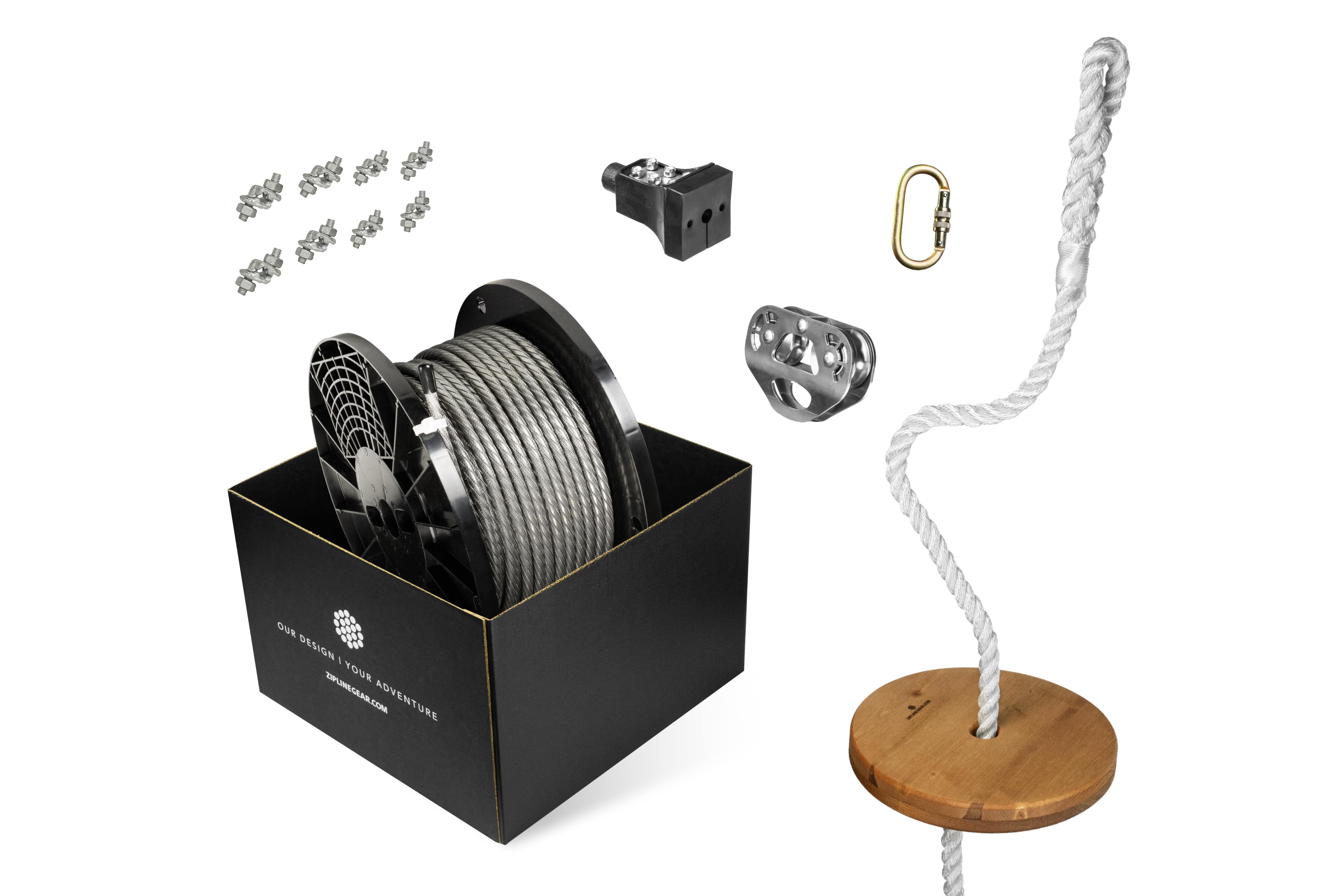Infrequently asked Questions about Zip Lines
Should I be worried about lightning?
We occasionally get the question of whether a zip line creates a safety concern for locations with frequent lightning storms. While we are not experts on the subject, here’s our general understanding:
-
A zip line cable will not attract lightning, or make the trees/poles on either end more or less likely to be struck, but it can conduct the electrical surge if either anchor is hit.
-
People should always seek shelter in a building or vehicle during a lightning storm, and up to 30 minutes after.
-
If you have reason to believe one of your zip line anchors was struck during a lightning storm, do a thorough inspection of both anchors to look for charring or broken limbs, and perform another weight test on the system before allowing anyone to ride the zip line.
-
Please visit https://www.weather.gov/safety/lightning for more information on lightning safety.
What if I’m near salt water?
Operating a zip line near or above salt water can have significant effects on the hardware involved. While galvanized cable is almost always the preferred choice for a zip line cable (stronger and much less expensive), salt water spray is highly corrosive and usually necessitates a full upgrade to stainless steel cable and hardware to prevent rapid deterioration. In either case, inspect your equipment frequently, and immediately replace any equipment that has been compromised by rust or bleaching. Riding gear like harnesses, lanyards, and carabiners should be rinsed immediately after use (usually with warm fresh water, check your gear documentation for details) if it has come into direct contact with salt water.
What should I do if another tree falls on my zip line?
If your cable is hanging lower than it was prior to the treefall, that’s an immediate sign that your cable has likely experienced a much larger load than it was rated for, and should be replaced immediately. Even if there’s no apparent change in height, replacement is always the safest option - you’ll have to use your own judgment. Zip Line systems are generally designed to hold 5 times the maximum rider weight before any material yielding, but this can vary widely based on how the zip line was installed and what it’s anchored to. It’s also very difficult to estimate the force being applied by a falling tree. If you think the impact was minimal and you’re willing to take the risk, at the very least do a thorough inspection of the cable, check for slippage on the cable clamps, and perform a weight test on the system before anyone rides it again.
- Choosing a selection results in a full page refresh.
